1912 José Luis Cano, poeta español.
1911 Sam Levinson (humorist: Today I Am a Fountain Pen)
1907
Alberto Moravia, novelista italiano.
1903 John von Neumann, Hungarian-born mathematician / astronomer
(Bocher Award 1938)
1902 Mortimer J. Adler New York
NY, American philosopher, educator and writer (Encyclopaedia Britannica)
1899 Edgar Neville, escritor y diplomático español.
1897 Cyrano de Bergerac,
d’Edmond Rostand, la première
Une première théâtrale dont on ne cesse d’admirer l’auteur et son
œuvre: Cyrano de Bergerac, d’Edmond Rostand. Car, après le
naturalisme, Edmond Rostand a réussi avec éclat à ressusciter le drame
romantique qu’on croyait mort à jamais depuis l’échec des Burgraves
de Victor Hugo en 1843. Il est né en 1868, étudiant en droit, il écrit
des vers et, en 1888, publie un vaudeville, Le Gant rouge,
représenté sans succès au théâtre Cluny. Le recueil de poésies, Les
Musardises (1890), marque son entrée définitive dans le monde
des lettres. La même année, il épouse une jeune poétesse, Rosemonde
Gérard. L’année suivante, sa pièce Les Deux Pierrots est
également mal accueillie, alors que Les Romanesques , comédie
en vers parue en 1894, malgré sa mièvrerie et sa préciosité, séduit
néanmoins par sa grâce et son brillant. Cette pièce donne déjà un
aperçu du style fantaisiste et poétique qui va s’épanouir dans ses
prochaines œuvres. Rostand écrit ensuite, toujours en vers, deux pièces
pour Sarah Bernhardt : La Princesse lointaine (1895) et La
Samaritaine (1897).
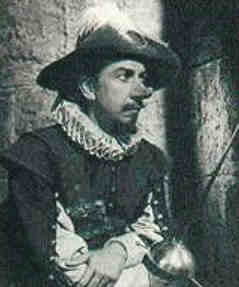 Il remporte enfin un triomphe au théâtre de la porte Saint-Martin,
le 28 decembre 1897, lors de la représentation de Cyrano de Bergerac
, comédie héroïque en cinq actes. Sans s’aveugler sur les faiblesses
de la pièce, il faut s’incliner devant l’habileté de la construction,
l’imagination et la fantaisie de l’intrigue, le pittoresque des tableaux,
la verve d’un esprit pétillant, l’ambiance faite à la fois de panache
et d’émotion, le lyrisme des tirades. Cette œuvre n’a pas pris une
ride depuis sa création. Le héros, Cyrano, spadassin au cœur tendre
et enlaidi par un nez protubérant, devient un mythe du théâtre et
un personnage qui tente les plus grands acteurs.
Il remporte enfin un triomphe au théâtre de la porte Saint-Martin,
le 28 decembre 1897, lors de la représentation de Cyrano de Bergerac
, comédie héroïque en cinq actes. Sans s’aveugler sur les faiblesses
de la pièce, il faut s’incliner devant l’habileté de la construction,
l’imagination et la fantaisie de l’intrigue, le pittoresque des tableaux,
la verve d’un esprit pétillant, l’ambiance faite à la fois de panache
et d’émotion, le lyrisme des tirades. Cette œuvre n’a pas pris une
ride depuis sa création. Le héros, Cyrano, spadassin au cœur tendre
et enlaidi par un nez protubérant, devient un mythe du théâtre et
un personnage qui tente les plus grands acteurs.
En 1900, Rostand publie un second drame néo-romantique, L’Aiglon,
qui transforme la vie du duc de Reichstadt en épopée sentimentale.
L’interprétation de Sarah Bernhardt contribue au succès de la pièce,
que le public applaudit à tout rompre.
Edmond Rostand avait-il réussi par ces deux coups de maître à moderniser
le drame en vers? Ses contemporains le crurent qui lui offrirent les
plus grands honneurs, dont l’élection à l’Académie française en 1901.
C’est alors, pourtant, que Rostand décide de se retirer, pour raison
de santé, à Cambo, dans le Pays basque. Il entreprend un vaste projet
qui l’occupe plusieurs années : en 1910, paraît Chantecler
, sorte de féerie symbolique mettant en scène des animaux. Rostand,
en voulant trop en dire, est tombé dans le didactisme. Aussi sa fable
fut-elle totalement incomprise. À titre posthume furent publiés un
recueil de poésies inspirées par la Première Guerre mondiale, Le
Vol de la Marseillaise (1919) et La Dernière Nuit de don
Juan (1921), un drame inachevé. Dernier fleuron du romantisme,
Edmond Rostand a su plaire au public de son temps en le touchant dans
ce qu’il a de moins changeant. Pour cette raison, il mérite de ne
pas être confondu avec les auteurs du Boulevard.
—
The real Savinien Cyrano de Bergerac was born on
06 March 1619 and died on 28 July 1655. He started with a military
career and then became a satirist and dramatist whose works combining
political satire and science-fantasy inspired a number of later writers.
He has been the basis of many romantic but unhistorical legends, of
which the best known is Edmond Rostand's play Cyrano de Bergerac
(1897), in which he is portrayed as a gallant and brilliant but shy
and ugly lover, possessed (as in fact he was) of a remarkably large
nose. |
1883 Abel (or Abraham?) George Warshawsky, US artist who
died in 1962. — MORE
ON WARSHAWSKY AT ART “4” DECEMBER
— Girl
in Green.
1882 Arthur Eddington England, astrophysicist
/ cosmologist / mathematician, who confirmed Einstein's theory of relativity
1872 Pio Baroja y Nessa, San Sebastion Spain, novelist
(Camino de Perfección).
1869 Chewing gum,
patented by William Finley Semple of Mount Vernon, Ohio.
1865
Félix Edouard Valloton, Swiss artist who died on 29 December 1925.
1860 Philip Wilson Steer, British artist who died on 21
March 1942 — MORE
ON STEER AT ART “4” DECEMBER —
LINKS
— Knucklebones,
Walberswick — Girl
and St. Bernard Dog.
1856 Woodrow Wilson,
67, 28th president of the United States, in Staunton, Virginia.
^top^
Wilson
became Governor of New Jersey and in 1912 was elected President of
the US in a landslide Democratic victory over Republican incumbent
William Howard Taft and Progressive Party candidate Theodore Roosevelt.
The focal point of President Wilson's first term in office was the
outbreak of World War I and his efforts to find a peaceful end to
the conflict while maintaining US neutrality. In 1916, he was narrowly
reelected President at the end of a close race against Charles Evans
Hughes, his Republican challenger.
In 1917, the renewal of German submarine warfare against neutral US
ships, and the "Zimmerman Note," which revealed a secret alliance
proposal by Germany to Mexico, led Wilson to ask Congress to declare
war on Germany [02 April 1917]. At the war's end, President Wilson
traveled to France, where he headed the US delegation to the Versailles
peace conference seeking an official end to the conflict. At Versailles,
Wilson was the only Allied leader who foresaw the future difficulty
that might arise from forcing punitive peace terms on an economically
ruined Germany. He also successfully advocated the creation of the
League of Nations as a means of maintaining peace in the postwar world.
In November 1920, President Wilson was awarded the Nobel Peace Prize
for his efforts at Versailles. During his second term the Nineteenth
Amendment to the US Constitution, giving women the right to vote,
was passed and ratified.
In October
1919, while campaigning in the United States to win approval for the
Treaty of Versailles and League of Nations, Wilson suffered a severe
stroke that paralyzed his left side and caused significant brain damage.
This illness likely contributed to Wilson's uncharacteristic failure
to reach a compromise with the US opponents to the European agreements,
and in November the US Senate refused to ratify the Treaty of Versailles
or the League of Nations.
During
his last year in office, there is evidence that Wilson's second wife,
Edith Bolling Galt Wilson, may have served as acting president for
the debilitated and bed-ridden president who often communicated through
her. In March 1921, Wilson's term expired, and he retired with his
wife to Washington DC, where he lived until his death there on 03
February 1924. Two days later, he was buried in Washington's National
Cathedral, the first president to be laid to rest in the nation's
capital. |
1852 Leonardo Torres Quevedo, científico e inventor español.
1847 Cesare Augusto Detti, Italian artist who died
on 19 May 1914.
1822 William Booth Taliaferro,
future Confederate General.
William Taliaferro is born in Gloucester County, Virginia. Taliaferro
would serve under General Thomas J. "Stonewall" Jackson for the first
part of the US Civil War, then spent the second half preparing coastal
defenses in the lower South. Taliaferro attended William and Mary
College and Harvard Law School. He practiced law in Virginia before
volunteering during the Mexican War, where he rose to the rank of
major. Before the Civil War, he served in the Virginia legislature
and the state militia. He was at Harper's Ferry in 1859 when John
Brown made his raid on the arsenal in an attempt to stir up a slave
insurrection.
Taliaferro became
a colonel in the Confederate Army when the war began. He fought in
western Virginia in 1861, then served under Jackson in 1862. His relationship
with Jackson was rocky at first, as he became involved in a dispute
between Jackson and General William Loring. Taliaferro signed a petition
circulated by Loring that protested Jackson's placement of troops
at Romney, Virginia. Taliaferro fought alongside Jackson during the
1862 Shenandoah Valley campaign, and he impressed his commander later
in the summer at the Battle of Cedar Mountain. Jackson gave him permanent
command of Jackson's old division for the Second Battle of Bull Run
in late August, but a wound kept Taliaferro from seeing action.
Shortly after the Battle of Fredericksburg
in December 1862, Taliaferro was transferred to Charleston. He helped
General Pierre G. T. Beauregard fortify the city, for which Beauregard
gave him an enthusiastic commendation. Taliaferro's work made Charleston
impenetrable for the Union; it did not fall until the end of the war.
He helped evacuate Savannah, Georgia, before William T. Sherman's
army captured the city in 1864. Taliaferro ended the war fighting
with General Joseph Johnston's army at Bentonville, North Carolina.
He spent the years after the war practicing law and serving in the
Virginia legislature and as a county judge before his death in 1898.
|
1808 Dupré, mathematician |
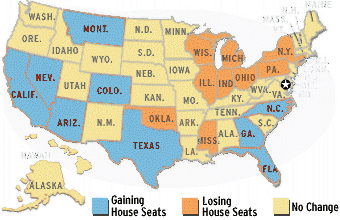 2000
First results of US 2000 census are released
2000
First results of US 2000 census are released Two
rare koalas described as “the cutest things you have ever seen” and stolen
from the San Francisco Zoo, are found unharmed. Shortly after midnight,
police get an anonymous tip that the koalas are in a private home. Officers
go to the house and rescue the koalas. Zoo personnel then come to collect
the koalas and return them to the zoo.
Two
rare koalas described as “the cutest things you have ever seen” and stolen
from the San Francisco Zoo, are found unharmed. Shortly after midnight,
police get an anonymous tip that the koalas are in a private home. Officers
go to the house and rescue the koalas. Zoo personnel then come to collect
the koalas and return them to the zoo.  Once hunted nearly to extinction for its thick fur, the koala now lives
in eucalyptus forests in eastern Australia, where it is protected by strict
law. Two well-dressed men acting suspiciously were asking unusual questions
about the animals on 25 December. They asked, for example, how to buy one.
Later in the day, a man was spotted on the roof of the building. It is believed
that whoever stole the koalas broke into the locked building through a skylight.
In the morning, an empty cardboard box was sitting in front of the building.
And the two koalas were gone.
Once hunted nearly to extinction for its thick fur, the koala now lives
in eucalyptus forests in eastern Australia, where it is protected by strict
law. Two well-dressed men acting suspiciously were asking unusual questions
about the animals on 25 December. They asked, for example, how to buy one.
Later in the day, a man was spotted on the roof of the building. It is believed
that whoever stole the koalas broke into the locked building through a skylight.
In the morning, an empty cardboard box was sitting in front of the building.
And the two koalas were gone. 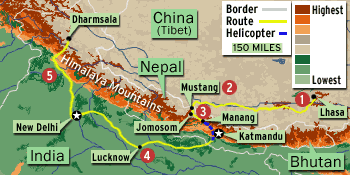 (1)
Lhasa: After two months of planning, the Karmapa and companions sneaked
out of their monastery and started their arduous journey. They spent 2 1/2
days bumping across a 13,000-foot-high plateau in a Land Cruiser, heading
toward terrain so cold.
(1)
Lhasa: After two months of planning, the Karmapa and companions sneaked
out of their monastery and started their arduous journey. They spent 2 1/2
days bumping across a 13,000-foot-high plateau in a Land Cruiser, heading
toward terrain so cold.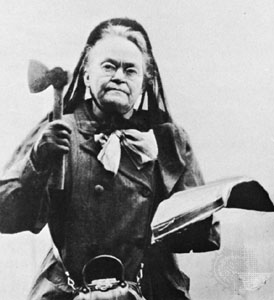 1900
Carry Nation attacks a Kansas saloon
1900
Carry Nation attacks a Kansas saloon 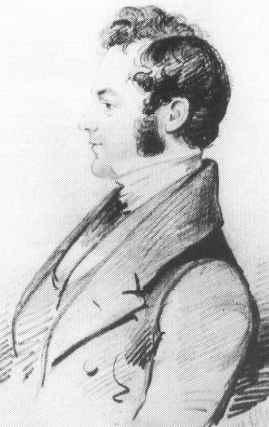
 Il remporte enfin un triomphe au théâtre de la porte Saint-Martin,
le 28 decembre 1897, lors de la représentation de Cyrano de Bergerac
, comédie héroïque en cinq actes. Sans s’aveugler sur les faiblesses
de la pièce, il faut s’incliner devant l’habileté de la construction,
l’imagination et la fantaisie de l’intrigue, le pittoresque des tableaux,
la verve d’un esprit pétillant, l’ambiance faite à la fois de panache
et d’émotion, le lyrisme des tirades. Cette œuvre n’a pas pris une
ride depuis sa création. Le héros, Cyrano, spadassin au cœur tendre
et enlaidi par un nez protubérant, devient un mythe du théâtre et
un personnage qui tente les plus grands acteurs.
Il remporte enfin un triomphe au théâtre de la porte Saint-Martin,
le 28 decembre 1897, lors de la représentation de Cyrano de Bergerac
, comédie héroïque en cinq actes. Sans s’aveugler sur les faiblesses
de la pièce, il faut s’incliner devant l’habileté de la construction,
l’imagination et la fantaisie de l’intrigue, le pittoresque des tableaux,
la verve d’un esprit pétillant, l’ambiance faite à la fois de panache
et d’émotion, le lyrisme des tirades. Cette œuvre n’a pas pris une
ride depuis sa création. Le héros, Cyrano, spadassin au cœur tendre
et enlaidi par un nez protubérant, devient un mythe du théâtre et
un personnage qui tente les plus grands acteurs.